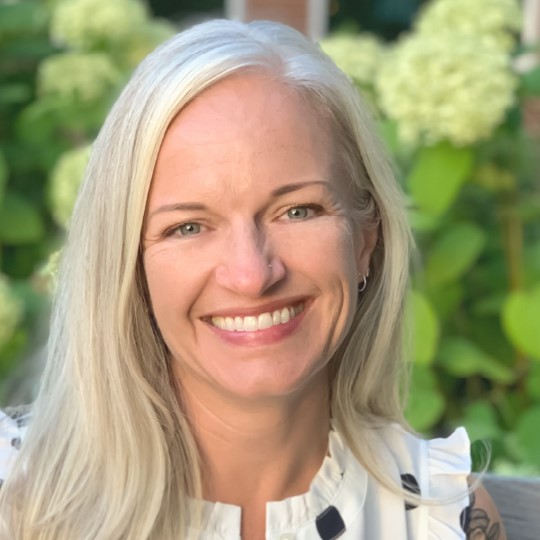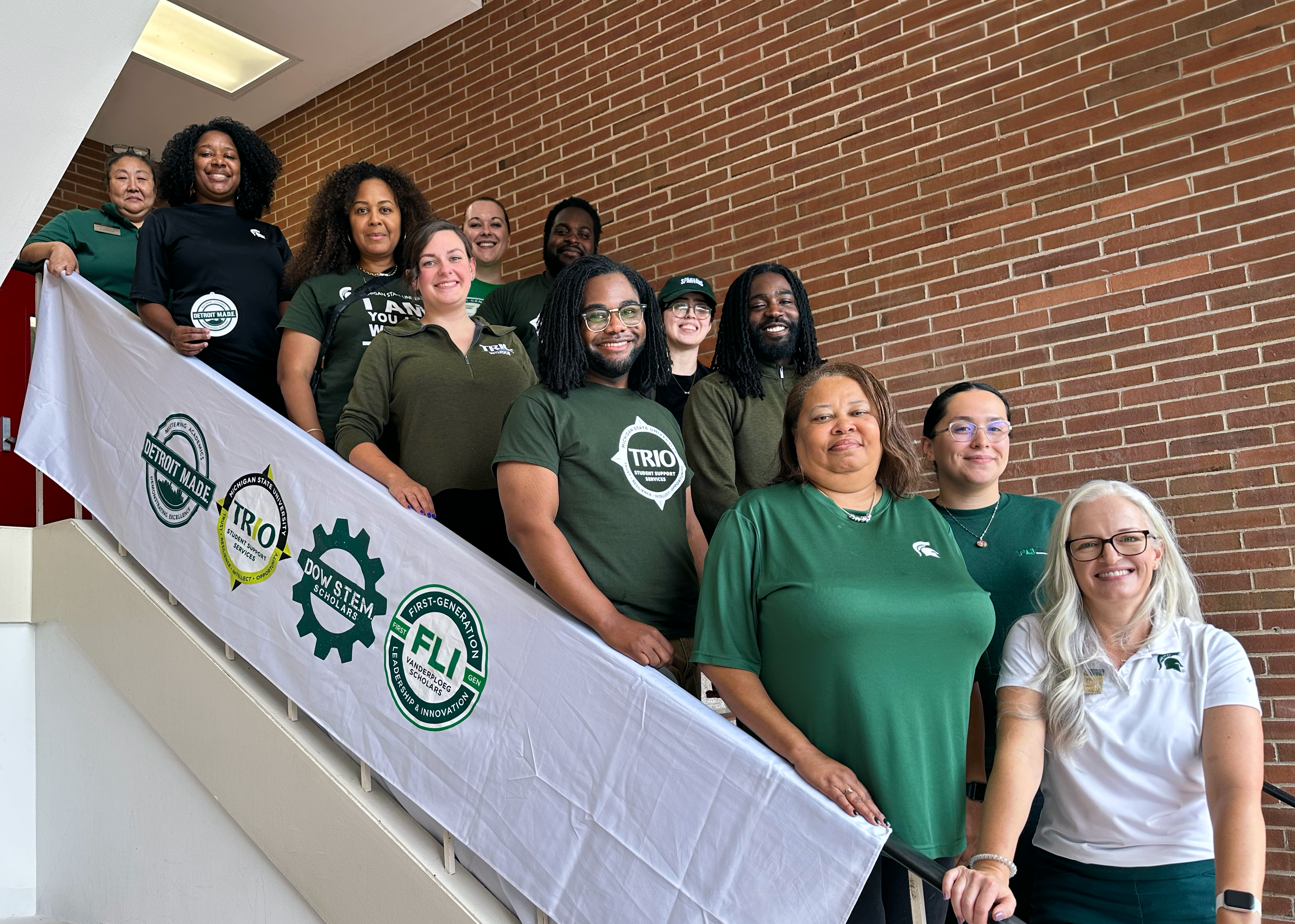Dr. Heather Shea brings leadership and vision to supporting student persistence
By Kristina Beatty
 After more than 11 years on campus, Dr. Heather Shea joined the Office of Undergraduate Education in August 2024 as the new director of the Pathway Programs, overseeing Detroit M.A.D.E., Dow STEM Scholars Program, TRIO Student Support Services (SSS), and FLI Vanderploeg Scholars. Shea most recently served as the inaugural director of Women*s Student Services since 2019, part of the division of Student Life & Engagement, where she worked to advance women and gender equity at MSU while fostering an environment to support student success and advance overall DEIB work on campus.
After more than 11 years on campus, Dr. Heather Shea joined the Office of Undergraduate Education in August 2024 as the new director of the Pathway Programs, overseeing Detroit M.A.D.E., Dow STEM Scholars Program, TRIO Student Support Services (SSS), and FLI Vanderploeg Scholars. Shea most recently served as the inaugural director of Women*s Student Services since 2019, part of the division of Student Life & Engagement, where she worked to advance women and gender equity at MSU while fostering an environment to support student success and advance overall DEIB work on campus.
MSU’s Pathway Programs are an affirming, dynamic network of programs committed to building community, partnerships, and relationships for the advocacy of holistic student success, centered in social justice and equity. The common threads among the Pathway programs include first-year seminars, summer bridge programs, academic cohorts, and other community connection opportunities. As a collective, Pathways staff take meaningful action to reduce opportunity gaps and support students’ persistence towards graduation.
As she continues settling into her new role, Shea is excited to expand on the already phenomenal work of the four program directors, Dr. Joy Hannibal (Detroit M.A.D.E.), Jonglim Han (Dow STEM Scholars), Jieron Robinson (TRIO SSS) and Sarah Ward (FLI Vanderploeg Scholars) and their teams. Their work will continue to focus on creating opportunities for collaboration and cohesion, both within the programs themselves and across campus.
Charting the path
Forefront on the list for Shea is creating strong campus connections with other campus programs supporting student persistence. Creating cohesion and networks of support for students, who study within all the colleges across campus, would help reduce opportunity gaps and could move students from one support and community system to another as they work their way through their academic careers. “They are all Michigan State University students,” says Shea, “and we have a collective responsibility to build a network of cohesive experiences because students don’t experience the same separation or silos—we are all one team.”
Similarly important to this work, explains Shea, is creating an identity among the four programs to bind them together, not only for better resource allocation, but creating recognition and understanding across campus of the important work being done to help students persist through their academic experience. “We’re thinking about the name ‘pathways’ and what exactly that means – also understanding there are several other pathway-framed programs across campus in other colleges. The programs that support student persistence are essential to our retention work on campus, and we want to move toward a name that better reflects the work we do and the amazing community we serve,” clarifies Shea.
For Shea, one common identity among these programs is place-based. “These programs work to create spaces and places where students find community, find academic resources, and feel like they belong,” she shares. “Points of origin for students can translate into a space of community and belonging, so how do we expand that for students from other communities and how do we continue to create opportunity for students in their second and third year?”
Mountains to move
But it’s not just the students who experience barriers – educators whose work centers on student success, nationwide, are met with increasing restrictions in resources, both human and monetary. While the engagement in these type of support programs continues to expand, creating sustainable programs that can serve both students and allow staff to focus on this important work without burnout or feelings of overwork can challenge the valuable support these programs provide to the campus communities.
Programs like the Pathway Programs provide not just academic resources and experiences, they provide holistic wrap-around support, facing both the job of helping students succeed academically, but also building out their co-curricular experience and addressing some of the basic needs support of students. “Partnership is central to our success as a suite of programs,” says Shea. “Collaborative work with existing initiatives will be important connections, but partnership means not just working with our campus partners, but working with state and federal grants as well as with donors who are passionate about student success and care about the students we serve.”
“Reducing our silos and reaching out to agencies and supporters who truly work and care for the success of our students is integral to building the future of the programs. The cohesion of the student experience is essential,” added Shea, echoing President Guskiewicz statement, “We’re one team” moving forward together.
Learn more about the Pathway Programs here, and reach out to Dr. Heather Shea should you have questions or have ideas about creating those places and spaces for collaboration and partnership.
